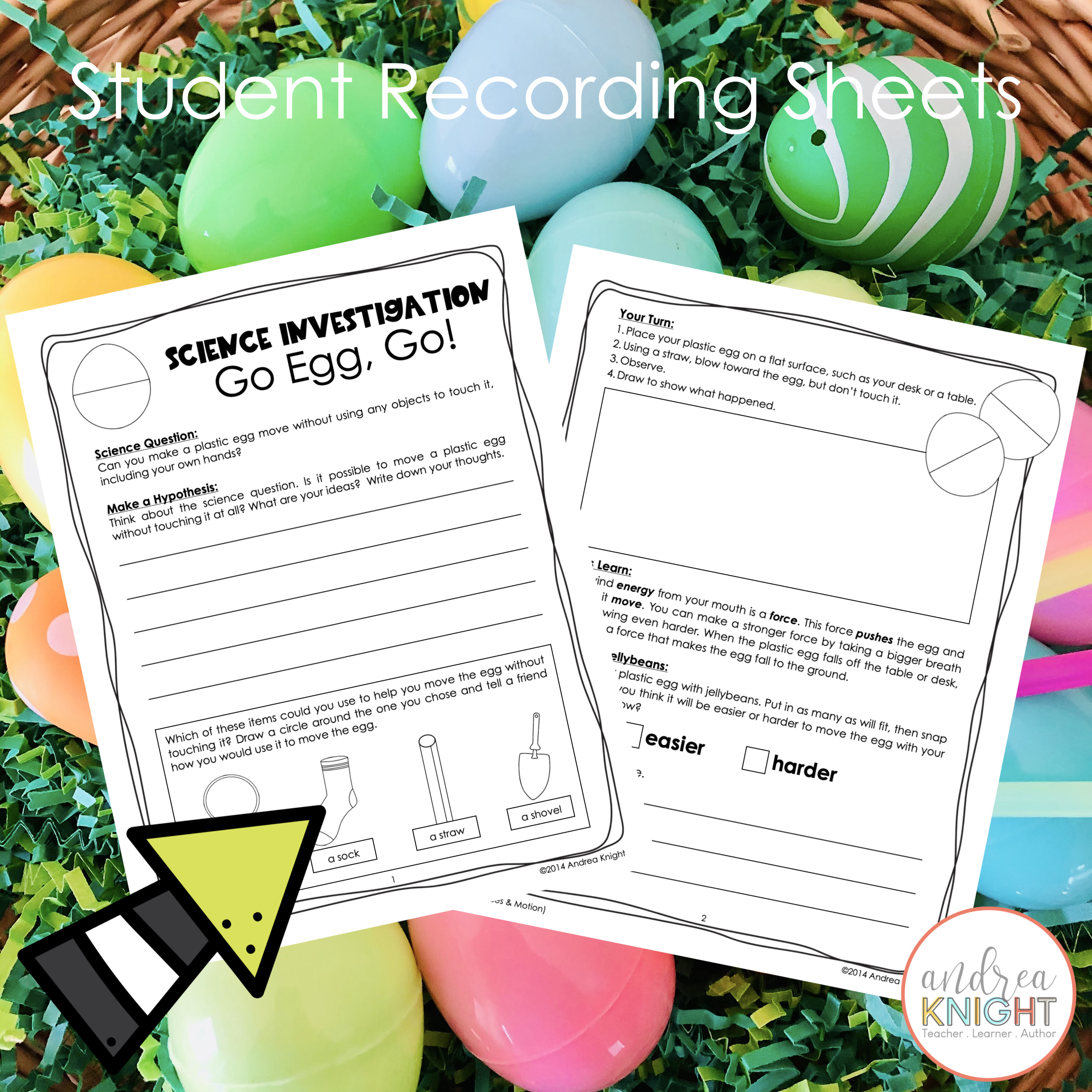
A quick search online, and you can find tons of Easter activities for kids. Many of them are craft projects and kid-friendly recipes, but my teacher-heart is always on the lookout for science experiments. I created this Easter science unit years ago, but over time, I found ways to cut the costs and simplify the planning. For example, I used to lug my heavy Crockpot to school to slowly melt a gigantic chocolate bunny. Now, I use a hair dryer and the tiny chocolate bunnies made by Lindt. The chocolate melts in less than 90 seconds so we can see the matter change in real time … and I’m not breaking my back shlepping a small appliance across the parking lot anymore.
Easter Activities for Kids
If you have the original science set, you can download the updated version for free by visiting your purchase history on TPT. The new unit still includes 6 different experiments, but the fonts are clear and consistent throughout the document. Also, a few instructional modifications have been made to some of the lessons. Oh, and I changed some of the lab names. Basically, it’s new and improved.
The science labs include:
- Properties of Peeps
- Pool Party Peeps
- Go Egg, Go!
- An Easter Rainbow
- Think it will sink?
- Little Bunny Goo Goo (my new favorite)
LAB: Little Bunny Goo Goo
Ok, I guess the name of this lab shows my age because I’ve had a few new teachers tell me they don’t get it. Apparently the song Little Bunny Foo Foo has been lost on an entire generation (or two). But I’m sticking with the name because melted chocolate is gooey and the wordplay makes me laugh.

This science lesson experienced the most improvements. I think you’ll like them. Not only did I not want to bring my Crockpot to school anymore, but melting a cute bunny can sometimes result in a few tears depending on the makeup of your class. So I found a solution. If you repurpose the melted chocolate and form a new candy, that somehow makes it better … like he’s a shapeshifter instead. And that’s not sad. That’s cool.
Melting the chocolate with a hair dryer is so much faster and gives children an up close look at how heat can change the state of matter. Once it’s completely melted, we then spoon the runny chocolate into clean, empty K-cup pods. (TIP: If you have them, silicone candy molds would work great here.) Pop them into the freezer for 30-60 minutes and you have a newly formed solid in a different shape. Grab a scale to compare the weights before and after and you’ll have a lot of science and math concepts to talk about!

LAB: Pool Party Peeps
Wondering which liquids will dissolve sugary Peeps™ the fastest? I would tell you, but then that would ruin the surprise. However, recently I discovered that hot water has a different effect on the marshmallowy candy than cold water, so I added that to the list of liquids for the lab. I also created a little more opportunity for ownership in the experiment by leaving the sixth line blank so you (or the kids) could choose a liquid of your own.

For this science experiment, you’ll need six Peeps™, six clear cups, a timer⏲, and the following liquids:
- 🐥 lemon juice
- 🐥 clear soda
- 🐥 white vinegar
- 🐥 cold water
- 🐥 hot water
- 🐥 your choice
I recommend keeping the cost down by having one set-up that everyone can observe throughout the day. The candy needs to be dunked, flipped, or “basted” every hour so all sides of the marshmallow come in contact with the liquid it’s sitting in. If you’re able to get plenty of donations though, one set-up per team of children will definitely increase engagement.

LAB: Go Egg, Go!
What is it with kids and straws? They love blowing stuff. This lesson is pretty simple, but you can extend it in many different ways depending on the amount of time you have. It begins with the science question: Can you move a plastic egg without touching it? As you take them through the investigation, they’ll learn the science behind the fun … that wind energy creates a force that can set an object in motion. It’s easy with an empty egg, but what if we fill the egg with jellybeans? Will the added weight require a greater force?

💡 If you have time, you can repeat the activity using different objects inside the eggs such as cotton balls, rice, and pennies. By trying different items, the kids will learn that objects with a greater weight will require a greater amount of energy to force it to move. They will either have to blow harder or try a larger straw.
💡 You can also take this lesson to the playground. Will an egg full of packed sand roll down the slide faster than an empty egg? Or will the weight have no effect on the speed of the object? And why, on a flat surface, does the egg not roll in a straight line? Does the unbalanced shape of an object impact the direction in which it moves?
Easter Activities for Kids
You can grab the science labs👉 HERE or by clicking the image below. Across all six Easter activities, you can teach or review the following science topics and vocabulary:
- describe the physical properties of matter
- understand changes in temperature can create changes in matter
- observe how some liquids cause some solids to dissolve
- investigate why certain objects sink while others float
- use wind energy to force an object into motion
- mix colors to create new colors
MORE SCIENCE IDEAS
Happy teaching!




